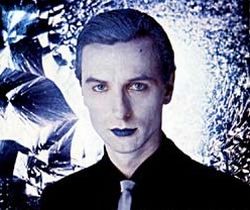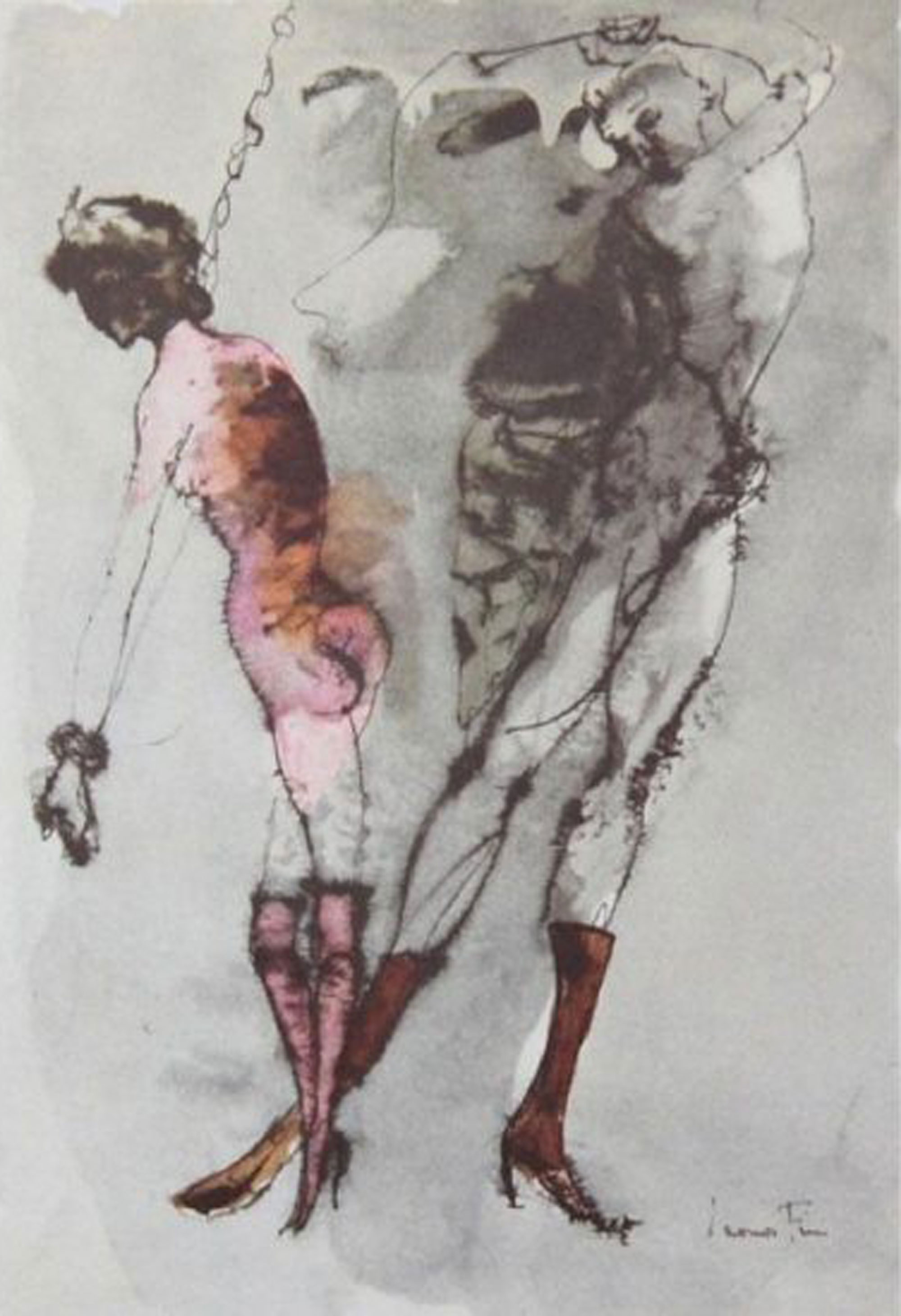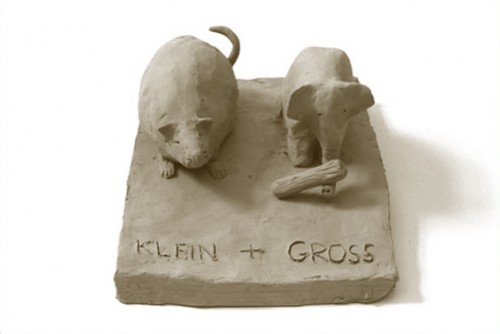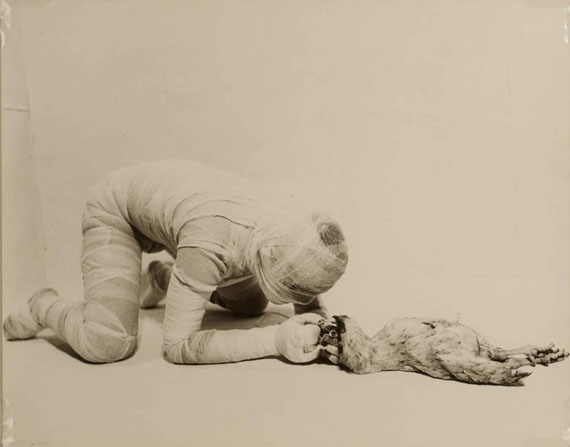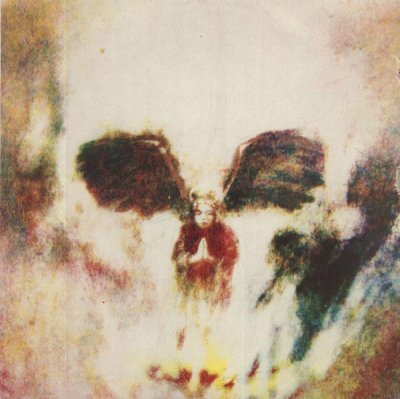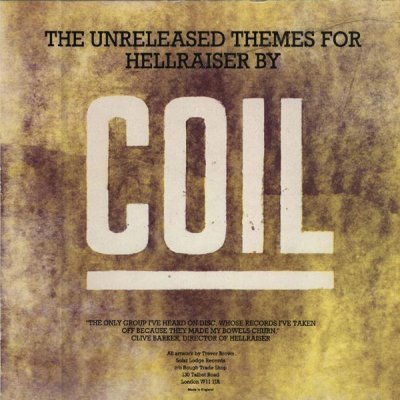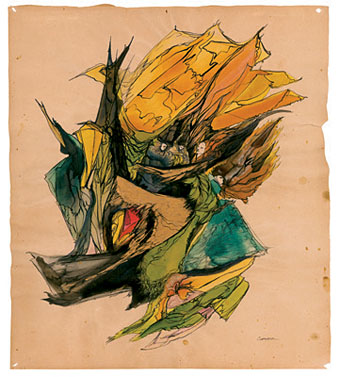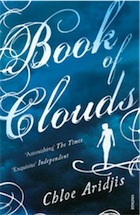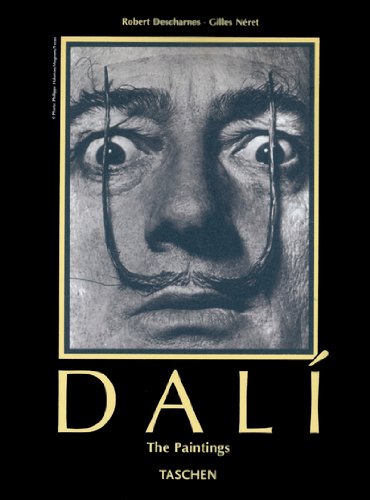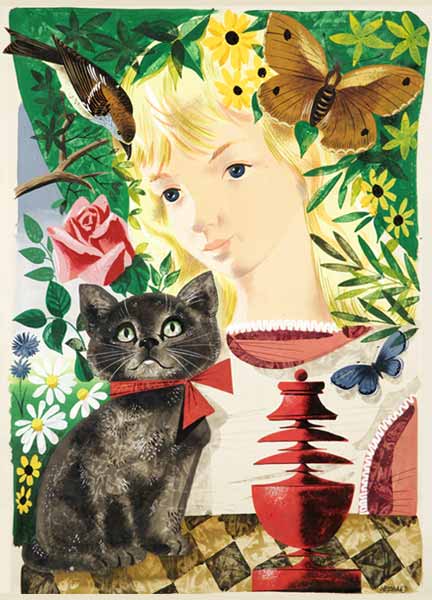John Samuel Waters, Jr. (born April 22, 1946) is an American film director, screenwriter, actor, stand-up comedian, journalist, visual artist, and art collector, who rose to fame in the early 1970s for his transgressive cult films. Waters' 1970s and early '80s trash films feature his regular troupe of actors known as the Dreamlanders—among them Divine, Mink Stole, David Lochary, Mary Vivian Pearce, and Edith Massey. Starting with Desperate Living (1977), Waters began casting real-life convicted criminals (Liz Renay, Patty Hearst) and infamous people (Traci Lords, a former porn star).
Although he maintains apartments in New York City and San Francisco, and a summer home in Provincetown, Waters still mainly resides in his hometown of Baltimore, Maryland, where all his films are set. He is recognizable by his trademark pencil moustache, a look he has retained since the early 1970s.
http://en.wikipedia.org/wiki/John_Waters_(filmmaker)
Eat Your Makeup (1968) is a short film by filmmaker John Waters starring Divine, Mary Vivian Pearce, David Lochary, and Maelcum Soul.
It was John Waters' first film production made in 16mm film. It has never been released on video. However, it was screened occasionally in 2004 as part of the touring exhibition John Waters: Change of Life.
John Waters' first 16 mm film, about a deranged nanny (Maelcum Soul) who kidnaps young girls and forces them to model themselves to death in front of her boyfriend (David Lochary) and their crazed friends. It was never shown commercially.
http://en.wikipedia.org/wiki/Eat_Your_Makeup
Of all of John Waters unreleased films, this one is the best. It actually has something of a story line (I don't go in much for the abstract stuff) and it has the first sightings of a lot of the JW regulars.
I believe it was filmed in JW's parent's backyard in Baltimore, MD.
If your a die hard JW fan, it is definitely worth seeing if it's possible.
I was only lucky enough to view it at a gallery in NYC.
In this day & age of DVD hysteria, I believe someday it will be released to the public along with Roman Candles, Mondo Trasho, & Multiple Maniacs.
Hail to the Pope of Trash!
oigirl77
http://www.imdb.com/title/tt0061611/
The movie with which future shock mega-star John Waters graduated to 16mm film, this third short from the "Prince of Puke" features a maniacal couple who kidnap young girls, forcing them to perform the titular duties before modeling themselves to death. Never shown commercially following it's two-evening run in a Baltimore church basement, Eat Your Make-Up remains one of the most sought-after films among Waters' die-hard fans.
Jason Buchanan, Rovi
http://www.rottentomatoes.com/m/eat_your_make_up/
Eat Your Makeup makes use of extended allegory, which Waters consistently employed as an early narrative device, most effectively with his witty critique of government as transmitted through Edith Massey’s Queen Carlotta in Desperate Living and the total reversal of traditional American notions of good and bad in both Pink Flamingos and Female Trouble. The opening shot is a woman crawling through desert sand (actually Waters’s parents’ lawn), desperately repeating "Makeup? Makeup!" A shirtless guy looks on disinterestedly, and the woman tugs at his pants, begging for makeup. He appeases her with a plate of makeup, which she greedily devours. The makeup-seeker is a model, and along with three other models (one with a Warhol hairstyle), is captured by the evil couple of David Lochary and Maelcum Soul. The models are forced to eat makeup and model themselves to death. A catwalk is constructed in the middle of the woods and there they strut. Photos snap. Catholics incongruously perform the wafer ritual. A plate of makeup is served and the models hungrily gobble it up, while the crowd indulges in the fetish of watching beautiful women eat. The crowd is always there, inflicting verbal and physical abuse to the models. The torture devolves into carnivalesque slapstick weirdness. The models continue to model pointlessly, and a doll is destroyed to the tune of "99 Bottles of Beer," which agonizingly is counted all the way down to 88.
Punctuating Eat Your Makeup is a scene where Waters openly alludes to a specific political event for the first time in his films. An androgynous, 17-year-old Divine is sitting around reading Screen Stars magazine and drifts into a daydream. She is (a slightly overweight) Jackie O and by her side is a faux JFK, in a car with the top off, driving slowly down the street in obvious emulation of November 22, 1963 when JFK was shot in Dallas. The scene is boring— for a long time they wave mindlessly at the nonexistent crowd until JFK is suddenly and graphically shot in an impressively faithful rendition of the Zapruder film of the assassination. Like Warhol, Waters’s relationship to celebrity culture, fashion, the media, and products is ambiguous, neither celebrated nor discouraged, just part of life. A then-burgeoning symbol of pop culture— makeup— is focused on and exploded, conclusions optional. Eat Your Makeup edges closer to the zenith that Waters would achieve throughout the ’70s: examining USA rebel culture on its own symbolic, materialist, and nonsensical terms.
Nick Stillman
http://www.brooklynrail.org/2004/03/film/waterss-formative-years1964-68
Although he maintains apartments in New York City and San Francisco, and a summer home in Provincetown, Waters still mainly resides in his hometown of Baltimore, Maryland, where all his films are set. He is recognizable by his trademark pencil moustache, a look he has retained since the early 1970s.
http://en.wikipedia.org/wiki/John_Waters_(filmmaker)
Eat Your Makeup (1968) is a short film by filmmaker John Waters starring Divine, Mary Vivian Pearce, David Lochary, and Maelcum Soul.
It was John Waters' first film production made in 16mm film. It has never been released on video. However, it was screened occasionally in 2004 as part of the touring exhibition John Waters: Change of Life.
John Waters' first 16 mm film, about a deranged nanny (Maelcum Soul) who kidnaps young girls and forces them to model themselves to death in front of her boyfriend (David Lochary) and their crazed friends. It was never shown commercially.
http://en.wikipedia.org/wiki/Eat_Your_Makeup
Of all of John Waters unreleased films, this one is the best. It actually has something of a story line (I don't go in much for the abstract stuff) and it has the first sightings of a lot of the JW regulars.
I believe it was filmed in JW's parent's backyard in Baltimore, MD.
If your a die hard JW fan, it is definitely worth seeing if it's possible.
I was only lucky enough to view it at a gallery in NYC.
In this day & age of DVD hysteria, I believe someday it will be released to the public along with Roman Candles, Mondo Trasho, & Multiple Maniacs.
Hail to the Pope of Trash!
oigirl77
http://www.imdb.com/title/tt0061611/
The movie with which future shock mega-star John Waters graduated to 16mm film, this third short from the "Prince of Puke" features a maniacal couple who kidnap young girls, forcing them to perform the titular duties before modeling themselves to death. Never shown commercially following it's two-evening run in a Baltimore church basement, Eat Your Make-Up remains one of the most sought-after films among Waters' die-hard fans.
Jason Buchanan, Rovi
http://www.rottentomatoes.com/m/eat_your_make_up/
Eat Your Makeup makes use of extended allegory, which Waters consistently employed as an early narrative device, most effectively with his witty critique of government as transmitted through Edith Massey’s Queen Carlotta in Desperate Living and the total reversal of traditional American notions of good and bad in both Pink Flamingos and Female Trouble. The opening shot is a woman crawling through desert sand (actually Waters’s parents’ lawn), desperately repeating "Makeup? Makeup!" A shirtless guy looks on disinterestedly, and the woman tugs at his pants, begging for makeup. He appeases her with a plate of makeup, which she greedily devours. The makeup-seeker is a model, and along with three other models (one with a Warhol hairstyle), is captured by the evil couple of David Lochary and Maelcum Soul. The models are forced to eat makeup and model themselves to death. A catwalk is constructed in the middle of the woods and there they strut. Photos snap. Catholics incongruously perform the wafer ritual. A plate of makeup is served and the models hungrily gobble it up, while the crowd indulges in the fetish of watching beautiful women eat. The crowd is always there, inflicting verbal and physical abuse to the models. The torture devolves into carnivalesque slapstick weirdness. The models continue to model pointlessly, and a doll is destroyed to the tune of "99 Bottles of Beer," which agonizingly is counted all the way down to 88.
Punctuating Eat Your Makeup is a scene where Waters openly alludes to a specific political event for the first time in his films. An androgynous, 17-year-old Divine is sitting around reading Screen Stars magazine and drifts into a daydream. She is (a slightly overweight) Jackie O and by her side is a faux JFK, in a car with the top off, driving slowly down the street in obvious emulation of November 22, 1963 when JFK was shot in Dallas. The scene is boring— for a long time they wave mindlessly at the nonexistent crowd until JFK is suddenly and graphically shot in an impressively faithful rendition of the Zapruder film of the assassination. Like Warhol, Waters’s relationship to celebrity culture, fashion, the media, and products is ambiguous, neither celebrated nor discouraged, just part of life. A then-burgeoning symbol of pop culture— makeup— is focused on and exploded, conclusions optional. Eat Your Makeup edges closer to the zenith that Waters would achieve throughout the ’70s: examining USA rebel culture on its own symbolic, materialist, and nonsensical terms.
Nick Stillman
http://www.brooklynrail.org/2004/03/film/waterss-formative-years1964-68






